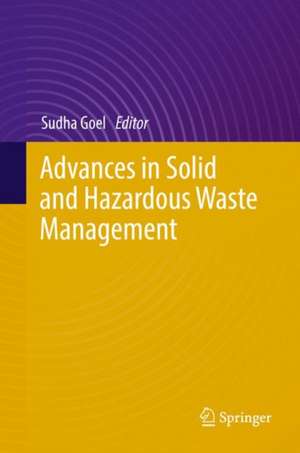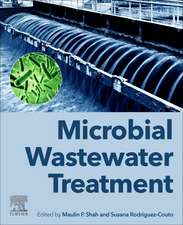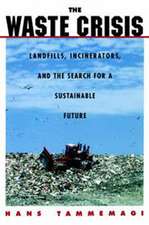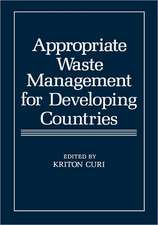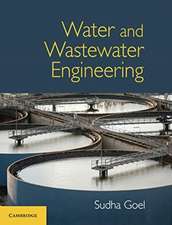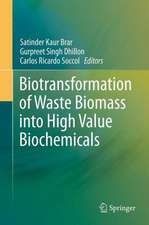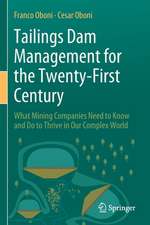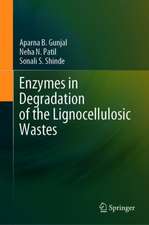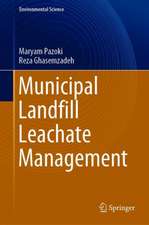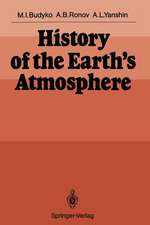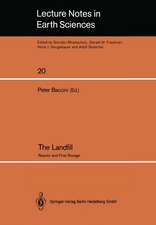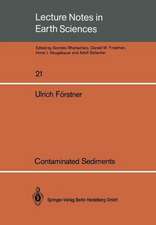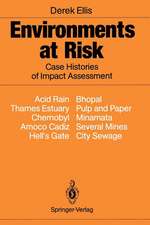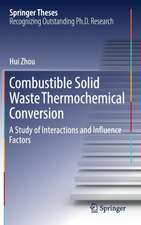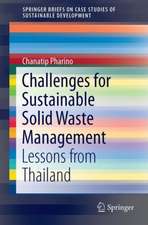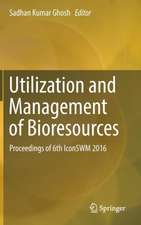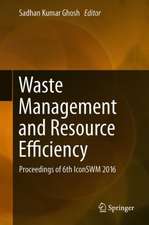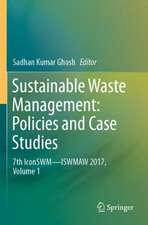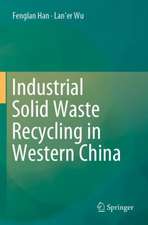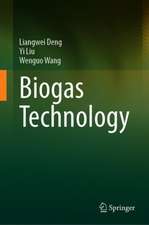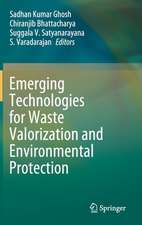Advances in Solid and Hazardous Waste Management
Editat de Sudha Goelen Limba Engleză Hardback – 16 aug 2017
The book subsequently discusses newer analytical methods like SEM, EDX, XRD and optical microscopy, along with selected “older” methods for sampling and characterizing different types of waste. The various applications of mathematical tools like linear optimization, various software/models like WISCLeach, and DRASTIC, and tools like remote sensing and GIS are illustrated in many of the chapters. Lastly, since composting is one of the most popular treatment methods for managing the organic component of municipal solid waste, the book provides an overview of composting and the fundamentals ofmicrobiology that are essential to understanding waste-related biological processes. The book was primarily written for students and practitioners in the field who are already familiar with the basics. All chapters were prepared by practicing experts and scholars in the field, and are intended to help readers better understand and apply these principles and practices in their own endeavours.
Key topics covered in the book:
• The circular economy and the economics of solid waste management
• Various remote sensing and GIS applications for managing municipal solid waste, coal fires in mines, changes in land use and land cover in industrial areas, etc.
• Treatment and management of different types of solid waste: institutional (including biomedical), residential, e-waste, plastic, and ash from thermal power plants • Sampling and characterization of municipal waste and compost
• Fundamentals of microbiology
• Overview of environmental regulations, especially those pertaining to solid and hazardous waste management
Preț: 797.17 lei
Preț vechi: 1035.29 lei
-23% Nou
Puncte Express: 1196
Preț estimativ în valută:
152.56€ • 165.65$ • 128.15£
152.56€ • 165.65$ • 128.15£
Carte tipărită la comandă
Livrare economică 18-24 aprilie
Preluare comenzi: 021 569.72.76
Specificații
ISBN-13: 9783319570747
ISBN-10: 3319570749
Pagini: 369
Ilustrații: X, 371 p. 116 illus., 38 illus. in color.
Dimensiuni: 155 x 235 mm
Greutate: 0.79 kg
Ediția:1st ed. 2017
Editura: Springer International Publishing
Colecția Springer
Locul publicării:Cham, Switzerland
ISBN-10: 3319570749
Pagini: 369
Ilustrații: X, 371 p. 116 illus., 38 illus. in color.
Dimensiuni: 155 x 235 mm
Greutate: 0.79 kg
Ediția:1st ed. 2017
Editura: Springer International Publishing
Colecția Springer
Locul publicării:Cham, Switzerland
Cuprins
1. Solid and Hazardous Waste Management: An Introduction.- 2. Moving Towards a Circular Economy in Solid Waste Management: Concepts and Practices.- 3. Institutional Waste Management.- 4. Scientific Approach for Municipal Solid Waste Characterization.- 5. Characterization of Municipal Solid Waste (MSW): Global Trends.- 6. Applications of Remote Sensing and Geographical Information System (GIS) in Assimilation of Environmental Data.- 7. Applications of Remote Sensing and GIS in Solid Waste Management –A Review.- 8. Environmental Impacts of Pond Ash Dumping at Kolaghat Thermal Power Plant (KTTP) – Physico-chemical Characterization of Pond Ash.- 9. Leaching Behaviour of Pond Ash.- 10. WQI, DRASTIC and Contaminant Transport Modelling Using WiscLEACH 2.0.- 11. Degradation of Plastics.- 12. Electronic Waste (E-waste) Generation and Management.- 13. Survey of Municipal Solid Waste (MSW) Treatment Methods and Compost Samples.- 14. Development and Application of a Multi-Criteria Decision Making(MCDM) Tool for Solid Waste Management: Kolkata as a Case Study.- 15. Fundamentals of Microbiology.- Appendix A: USEPA—RCRA’s Chemical Waste Compatibility List.- Appendix B: Environmental Regulations in India.- Appendix C: Country-wise E-waste generation rates (ordered from highest to lowest by kg/person-y).- Index.
Textul de pe ultima copertă
This book presents reviews, examples and case studies of innovative applications in solid and hazardous waste management. The economics of waste management have since become a significant research area in their own right, and two chapters address these issues. In addition, dedicated chapters cover specific categories of waste such as biomedical and institutional waste, plastics and e-waste.
The book subsequently discusses newer analytical methods like SEM, EDX, XRD and optical microscopy, along with selected “older” methods for sampling and characterizing different types of waste. The various applications of mathematical tools like linear optimization, various software/models like WISCLeach, and DRASTIC, and tools like remote sensing and GIS are illustrated in many of the chapters. Lastly, since composting is one of the most popular treatment methods for managing the organic component of municipal solid waste, the book provides an overview of composting and the fundamentals ofmicrobiology that are essential to understanding waste-related biological processes. The book was primarily written for students and practitioners in the field who are already familiar with the basics. All chapters were prepared by practicing experts and scholars in the field, and are intended to help readers better understand and apply these principles and practices in their own endeavours.
Key topics covered in the book:
• The circular economy and the economics of solid waste management
• Various remote sensing and GIS applications for managing municipal solid waste, coal fires in mines, changes in land use and land cover in industrial areas, etc.
• Treatment and management of different types of solid waste: institutional (including biomedical), residential, e-waste, plastic, and ash from thermal power plants • Sampling and characterization of municipal waste and compost
• Fundamentals of microbiology
• Overview of environmental regulations, especially those pertaining to solid and hazardous waste management
The book subsequently discusses newer analytical methods like SEM, EDX, XRD and optical microscopy, along with selected “older” methods for sampling and characterizing different types of waste. The various applications of mathematical tools like linear optimization, various software/models like WISCLeach, and DRASTIC, and tools like remote sensing and GIS are illustrated in many of the chapters. Lastly, since composting is one of the most popular treatment methods for managing the organic component of municipal solid waste, the book provides an overview of composting and the fundamentals ofmicrobiology that are essential to understanding waste-related biological processes. The book was primarily written for students and practitioners in the field who are already familiar with the basics. All chapters were prepared by practicing experts and scholars in the field, and are intended to help readers better understand and apply these principles and practices in their own endeavours.
Key topics covered in the book:
• The circular economy and the economics of solid waste management
• Various remote sensing and GIS applications for managing municipal solid waste, coal fires in mines, changes in land use and land cover in industrial areas, etc.
• Treatment and management of different types of solid waste: institutional (including biomedical), residential, e-waste, plastic, and ash from thermal power plants • Sampling and characterization of municipal waste and compost
• Fundamentals of microbiology
• Overview of environmental regulations, especially those pertaining to solid and hazardous waste management
Caracteristici
Demonstrates cutting-edge laboratory analytical tools and procedures Covers many different applications of mathematical optimization tools with solved examples Includes applications and case studies of remote sensing and GIS techniques
